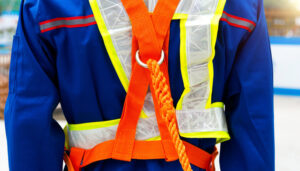New ice protection technology designed to help flying in winter aviation weather
Every season comes with its aviation weather challenges. Spring and summer offer the thrill of thunderstorms and tornado avoidance; Fall brings us level 5 hurricanes. But where do I begin with how much I dislike flying in Winter?
For starters, snow showers can pop up at a moment’s notice. Do I tow the jet to the FBO or have the passengers board in the dirty, old cement hangar? How about landing on icy runways? There have been times in my career when I was just along for the ride on an icy runway until I was lucky enough to hit a dry spot. As far as in-flight icing goes, I hate it.
I have flown all kinds of airplanes with all kinds of ice protection systems, and they all have their issues. Boots have their bridging problems – do we turn it on at the first sign of icing or wait until we see a half inch of ice on the wing? Heated wings take so much bleed air that I once thought we had lost an engine while [barely] climbing out of Driggs, Idaho. TKS fluid is just plain gross. Each of these examples has positives and negatives. I should also mention that I have flown without any ice protection system on board; obviously, that’s not a walk in the park either.
Embraer and Collins Aerospace are working together to create technology that will minimize the negatives of the various anti-icing features. The carbon nanotube electrothermal heating technology (CNT) is the partnership’s brainchild, and they hope it will improve the efficiency and sustainability of ice protection systems.
The system consists of a CNT heater and an ice protection controller and has been installed on the vertical stabilizer of Embraer’s Phenom 300E prototype. So far, it has completed 10 hours of ground and “dry air” testing in flight. The results have been encouraging.
Sustainability is one of the primary objectives with CNT, and the features are very impressive:
- It does not require chemical etching
- Lowers the energy requirement by 25%
- Significantly lighter than a conventional metallic heater
- Enhanced damage tolerance
- It is anticipated to result in a more extended product lifestyle
That’s quite a list! Embraer and Collins Aerospace is e hoping that the CNT technology will become the future standard for ice protection, especially for the new electric aircraft designs. It sounds wonderful; no more TKS fluid dripping on the hangar floor two days after we land.
Now if someone can please solve some of the other aviation weather challenges. Heated runways anyone?
RELATED CTS TRAINING










